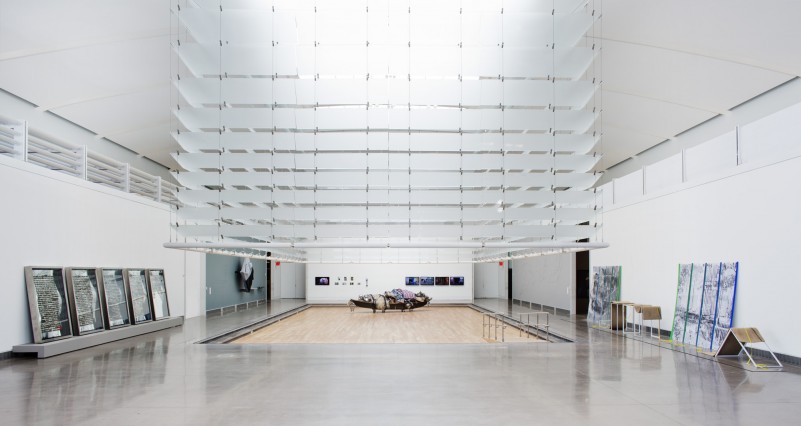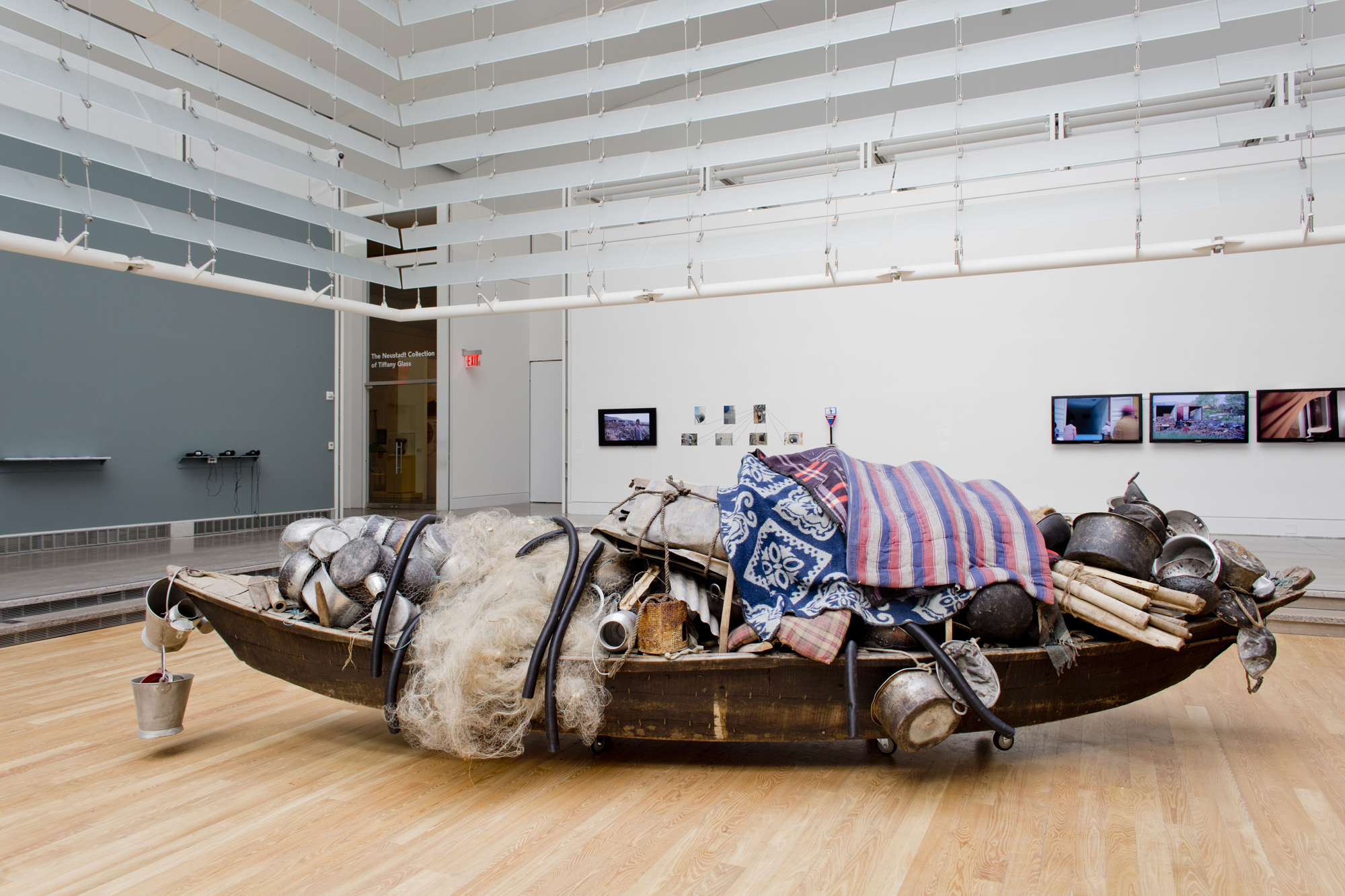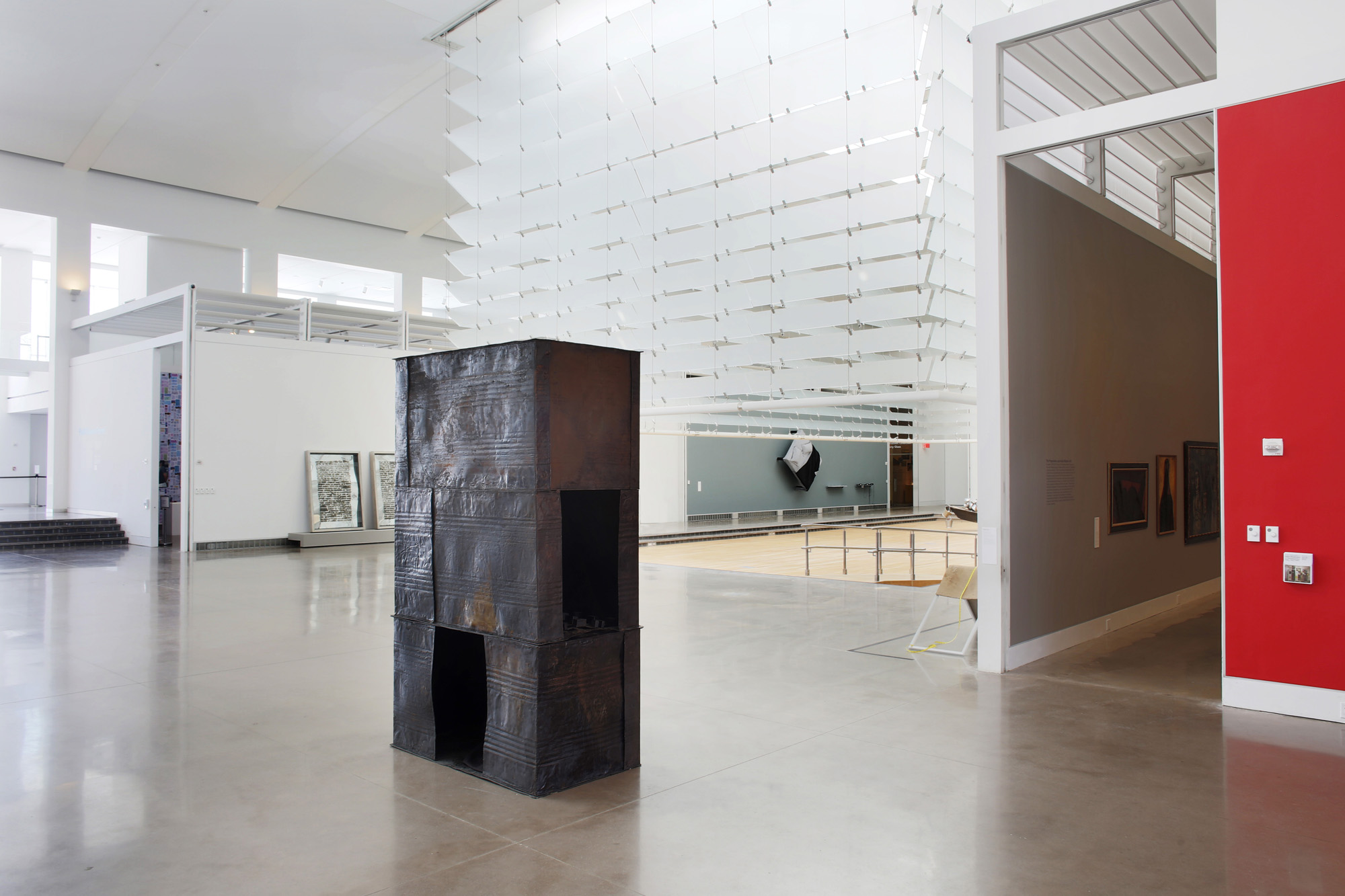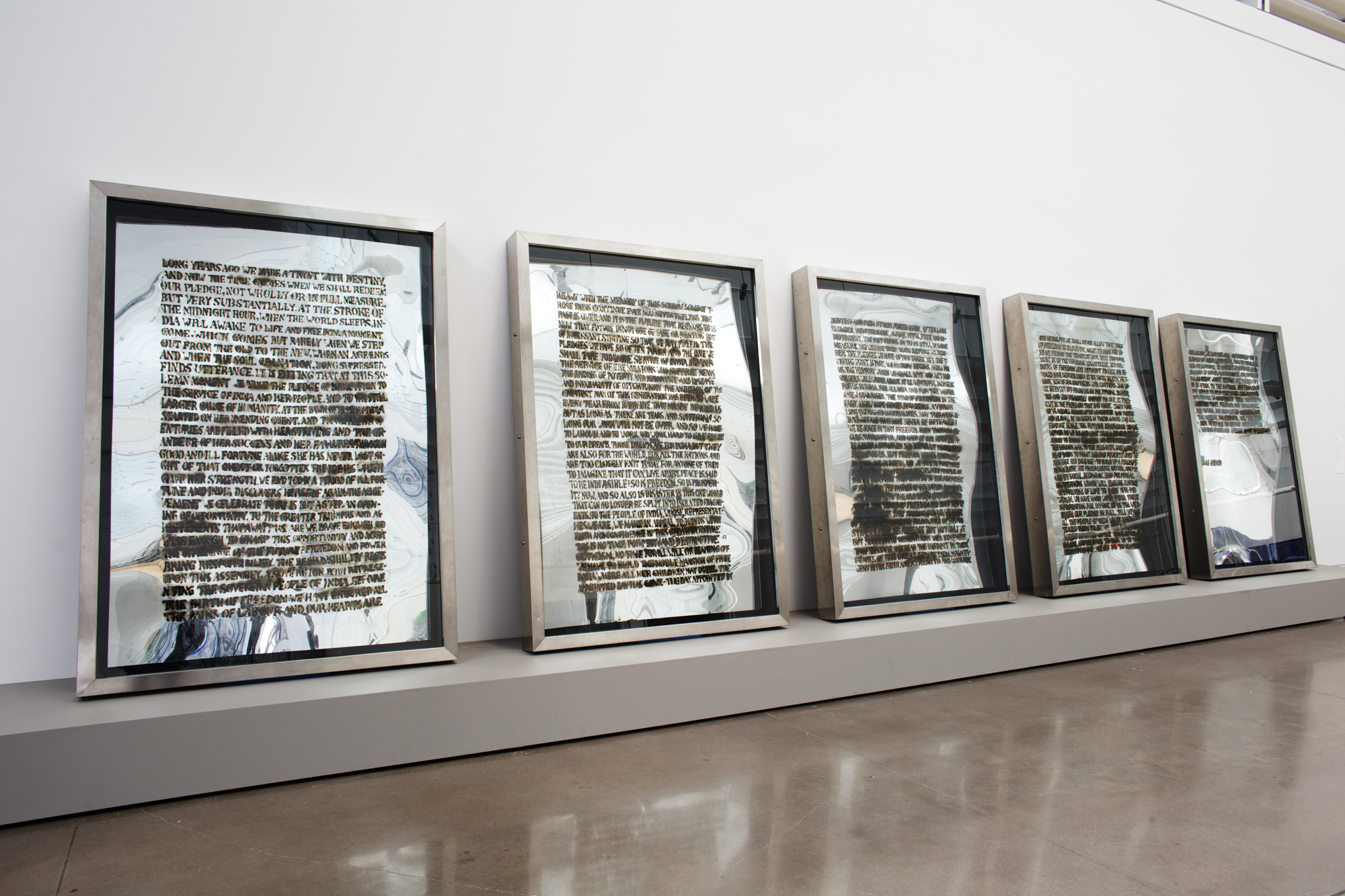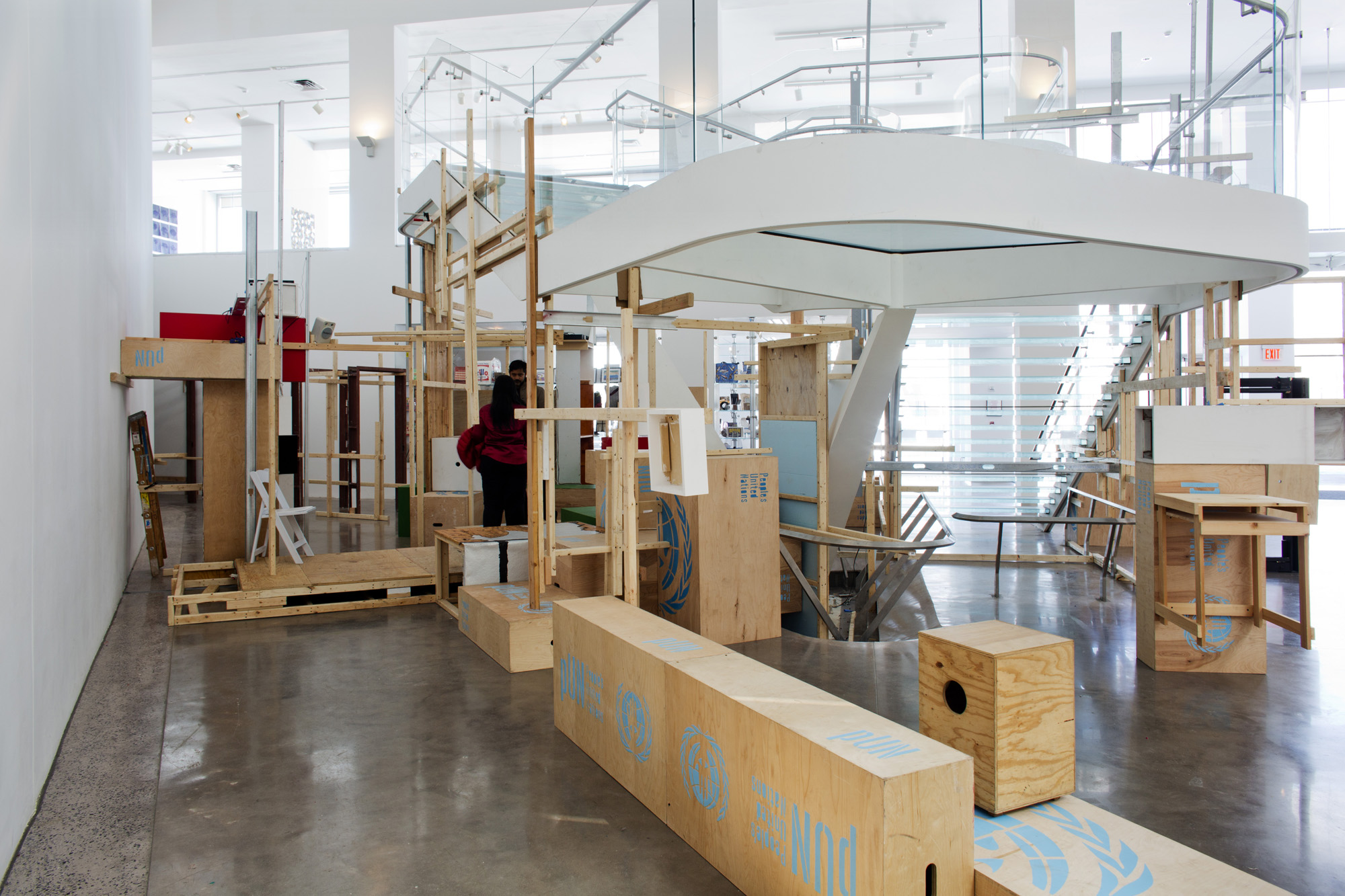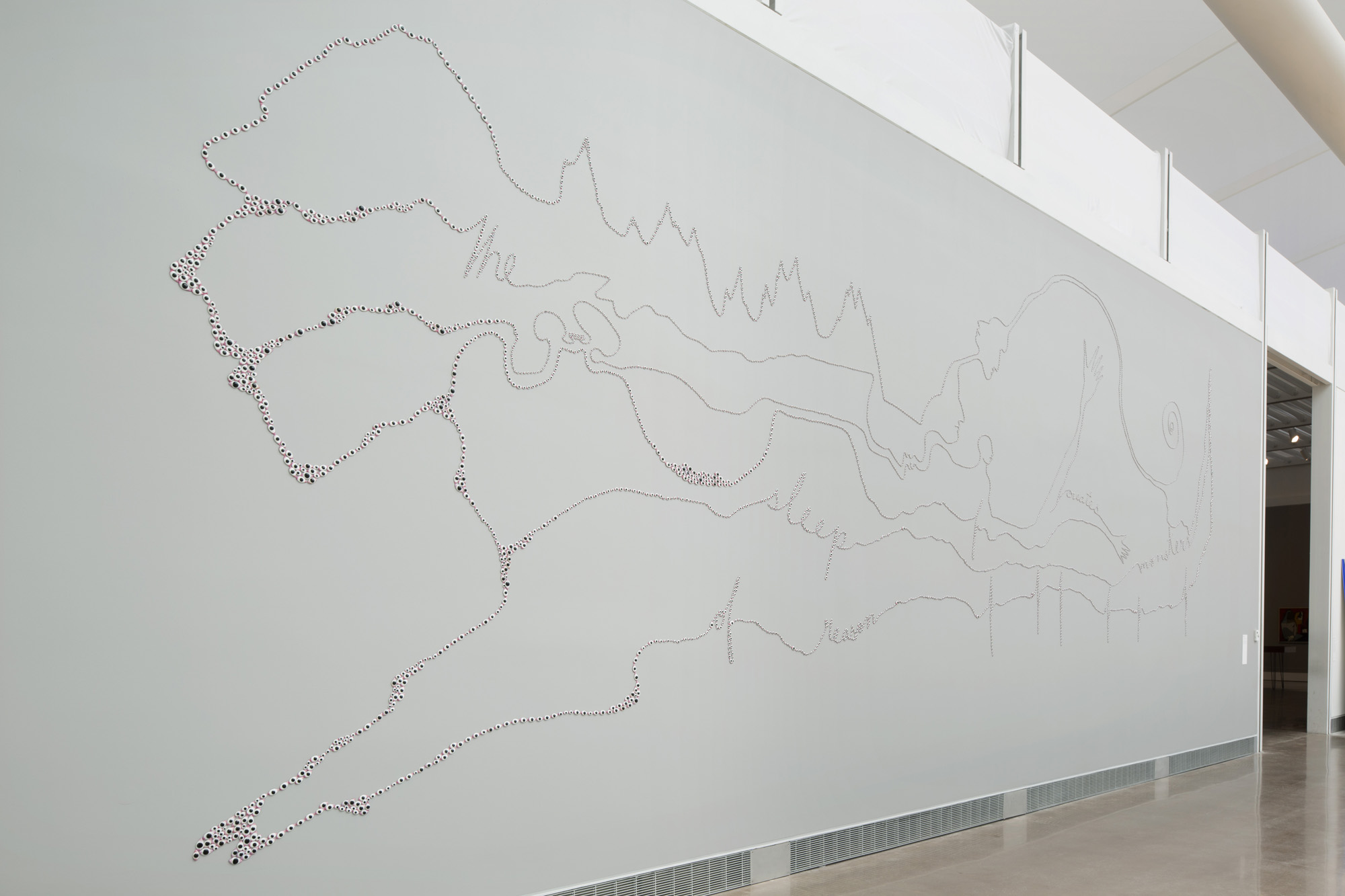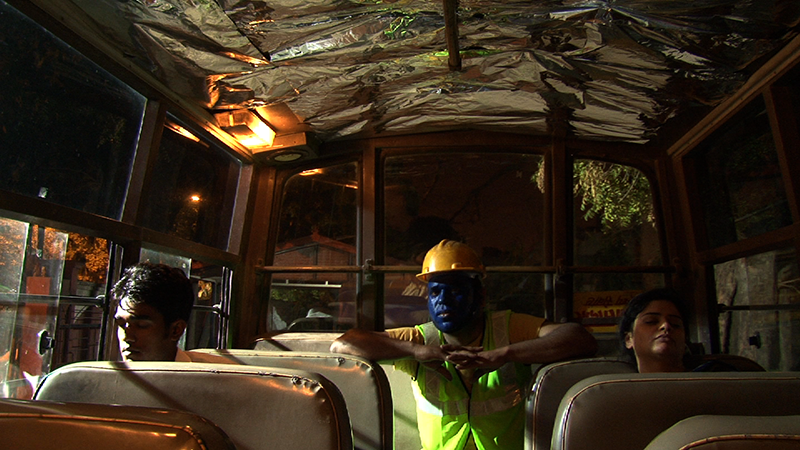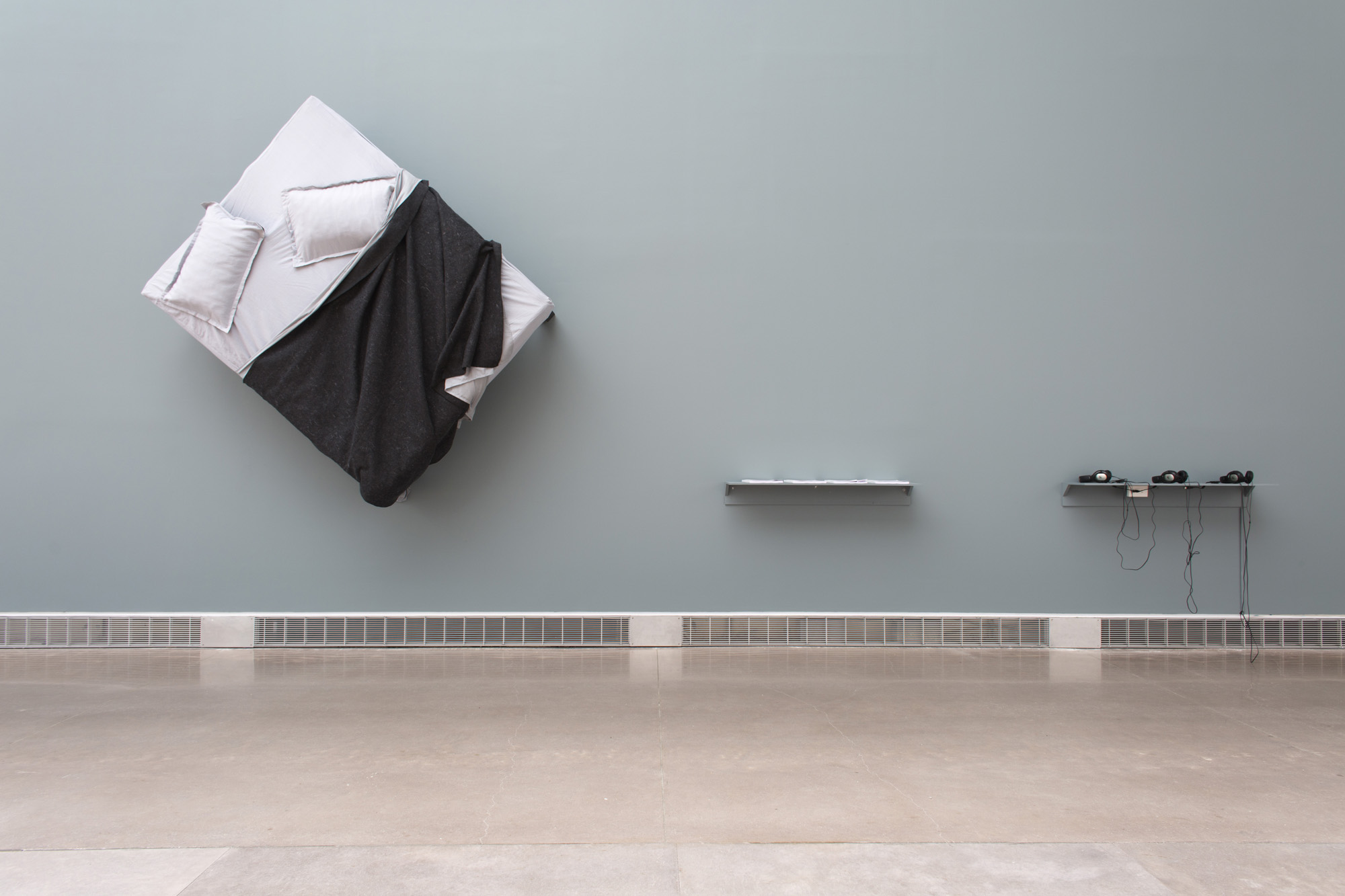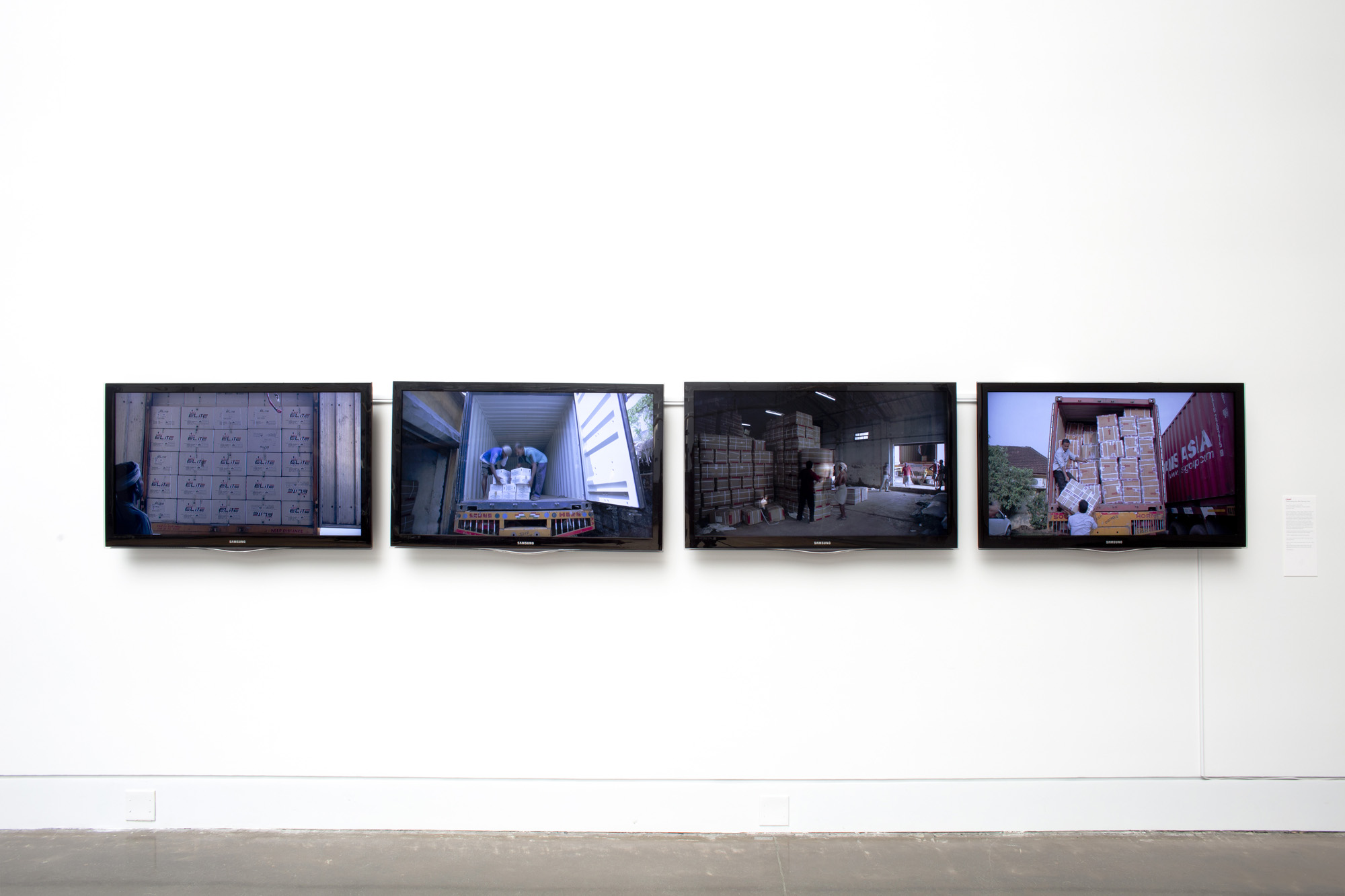Exhibitions - After Midnight: Indian Moderns and Contemporary Indian Art
After Midnight: Indian Moderns and Contemporary Indian Art
03.08.15 – 09.13.15
Curatorial introduction by Dr. Arshiya Lokhandwala.
The era following India’s 1947 independence was marked by the emergence of Indian modern art led by the Progressive Artists’ Group and their contemporaries. A half-century later, the year 1997 signaled the beginning of a new phase with Indian artists gaining sudden visibility in a newly globalized contemporary art world, while India experienced a surge of paradigm shifts including economic liberalization, political instability, and the growth of a religious right-wing. After Midnight: Indian Modernism to Contemporary India, 1947/1997 presents the juxtaposition of these two historical periods in Indian art for the first time, examining Indian modern art from 1947 through the 1970s, and contemporary art from 1997 to the present.
Taking its title from the phrase “Midnight’s Children,” coined by Salman Rushdie in his seminal 1981 novel about India’s transition to independence, the exhibition weaves themes of art and nation-building to reveal shifting zeitgeists in cultural production, and explores how these artistic practices regard and contest a geopolitical consciousness through modernization and globalization.
After Midnight presents works by the core members of the Progressives – M.F. Husain, S.H. Raza, and F.N. Souza – and their peers Ram Kumar, Krishen Khanna, V.S. Gaitonde, Tyeb Mehta, and Akbar Padamsee. The exhibition illuminates the journey of these eight artists, examining their work from the 1950s through the 1970s, tracing their influences and engagement with internationalism. While each made requisite visits to Europe in the 1950s, it was during Rockefeller-funded trips to New York City that their work was infused with a new level of experimentalism. To highlight this relationship with New York, After Midnight presents a body of film, photography, and chemical prints inspired by the artists’ interaction with the city’s artistic energy as well as a collection of ephemera from the same period.
Critically reflective of the changes witnessed after the economic liberalization and waves of globalization, the artists and works chosen for the contemporary section of After Midnight distinguish the exhibition not as a sweeping survey, but instead as an exploration of the particular avant-garde impetus within the two historical periods of Indian art. It seeks to engage with art practices that carry dialogues and questions emerging from an Indian context to be located within the larger global framework.
The Progressives and Modern Art
Founded in 1947 by F.N. Souza, the Progressive Artists’ Group was the most influential group of modern artists in India until it disbanded only nine years later in 1956. Incorporating post-Impressionist colors, Cubist forms, and Expressionistic styles with an Indian vocabulary, the Progressives sought to break from the rigid academism of the Bengal School of Art to encourage an Indian avant-garde engaged at an international level. As citizens of a new Indian nation, they took the liberty to explore, breathing new life into the scene. “Today we paint with absolute freedom for contents and techniques, almost anarchic; save that we are governed by one or two sound elemental and eternal laws, of aesthetic order, plastic coordination, and color composition,” wrote Souza in his manifesto for the Bombay Progressives Art Exhibition in 1948. After Midnight contextualizes visions and ideas like Souza’s, thereby highlighting their contribution to Indian modernity.
Despite the dissolution of the group, as individual artists the Progressives and their circle continued to further Indian modern art by experiencing the first wave of internationalism, residing and exhibiting in Zurich, London and Paris as early as 1952 and participating in the 1956 Venice Biennale. Departing from the dominant figurative tradition in India, they developed their pictorial language in various directions: M.F. Husain, Tyeb Mehta and Krishen Khanna maintained a representational mode with wide-ranging subject matters of their own; S.H. Raza, Ram Kumar, and V.S. Gaitonde gradually shifted into abstraction; and Akbar Padamsee developed an eclectic style between figurative and non-figurative. Raised Catholic, the work of Souza is critical of the corruption and hypocrisy of religion and represents his own struggle, frustration and disillusionment in life. Largely self-taught, Husain’s earlier themes of folk art, rural India and its modernization in the 1950s evolved to incorporate mythology, world history and themes from the epics of Indian literature such as the Ramayana and Mahabharata. In contrast to Husain and Souza, Mumbai-based Mehta took violence and disruption as central themes, clearly drawing on his own experiences in the 1947 partition riots in Mumbai.
Raza moved from landscapes to non-representational subjects in Paris during the late 1950s on his way to incorporating Indian symbolism in his work in the late 1970s. Kumar’s early figurative paintings from the 1950s looked at the idea of a nation under the onslaught of modernization and its effects on human life. In the early 1960s, his visit to the holy city of Banaras, in which he witnessed life and death, closely influenced him as he moved towards abstraction. Gaitonde’s abstractions from the late 1950s are evocative of landscapes, with central horizon lines structuring the compositions with a meditative Zen quality. His encounter with Abstract Expressionism in New York in the 1960s enhanced the flatness of his pictorial surface. The only Progressive who deliberately shifted between figurative and non-figurative was the Mumbai-based Padamsee. From portraits in the early 1950s, his work eventually transitioned into “metascapes” in the 1970s, a style in between landscape and abstraction.
Although these artists were primarily painters, their travels, in particular to New York, led them to experiment in varied media. Husain’s black-and-white film Through the Eyes of a Painter, 1967, and Untitled (Tiger), 1975, an experimental project of painting, performance and photography revolving around a female nude body, are a marked departure from his typical work. In 1969, in New York, Souza made his first chemical painting, a manipulation of printed images with solvent, declaring it the world’s first chemical painting by writing those four words on the work itself. Souza’s creation of chemical paintings transgressed the mass printed image and produced a new language of art. Khanna, in a chance encounter in the late 1960s, produced a series of photographic works capturing the layers of projected images and real-life “photo constructions.” Similarly, upon his return from New York, Mehta used the freeze-frame technique to make Koodal, 1970, an experimental film that upheld violence not as a disturbance but as a resolution. Also newly returned from New York, Padamsee made Syzygy, 1969, an animated film, inspired by Paul Klee’s pedagogical diagrams that epitomized the dialectical tension between sensuousness and austerity, math and mysticism.
A Self-Reflexive Gesture, 1997/2015
The contemporary element of After Midnight can be characterized as self-reflexive in its collective criticality towards the effects of globalization in India. The works represent issues which are at the core of the nation, including the rise of fundamentalism/fascism, environmental issues, and urbanization. The works of these 18 artists emphatically assert a new ethical underpinning.
Public Notice, 2003 by Jitish Kallat, meditates on the aftermath of the independence by rewriting the historical speech “Tryst with Destiny,” made by then Prime Minister Jawaharlal Nehru. The work refers to the nation with an inward-looking tone, perturbed by the current violence and religious fundamentalism. Tushar Joag’s Are You Awake?, 2013 is a ripple of almost 100 telephone conversations from South Mumbai to North Mumbai asking people to share their thoughts on sleep, sleeplessness, and waking. The artist examines the lack of civic engagement by inquiring if India is more asleep than awake as a nation. Anita Dube’s The Sleep of Reason Creates Monsters, 2001 draws large ominous figures alluding to the rise of fascism, created by affixing thousands of votive eyes (God’s eyes) from Hindu tradition on the gallery wall.
Shilpa Gupta‘s 1,278 unmarked, 28 hours by foot via National Highway No 1, East of the Line of Control Medium, 2013, consists of 1,278 etched marble slabs referring to the thousands of lives lost in unlawful killings in Kashmir. Visitors to the museum are invited to become guardians of the slab and at the conclusion of the exhibition, they will be distributed to the adoptees to honor the lost. Apocalypse, 2010 is a coin-polishing machine by Tallur L. N. that erases the value on coins and the denomination of its face, playing on the “polished” as synonym to “civilized.” Dayanita Singh’s Fileroom, 2012 addresses not only the work of making images, texts and memory, but also a larger confrontation with chaos, mortality and disorder in the labyrinths of working bureaucratic archives in a country of more than a billion people. Atul Dodiya brings forth a narrative of life and death, often in an autobiographical context. The striations on the cabinet along with a photograph from a newspaper of a falling figure from the World Trade Center reference 9/11, as does his sculpture Twins, 2012-2013, which warns of the fall of humankind.
In From Gulf to Gulf to Gulf, 2013, the art collaborative CAMP takes viewers on a journey to experience friendship and maritime histories, and to share the economies of exchange between artists and a group of sailors from Kutch, Sindh, Baluchistan and Southern Iran. This work shows a world that is not so easily cut up by nation-states, but rather under threat by globalization and required to set up new boundaries and protocols.
The humble kitchen space becomes a site for a heated political exchange in Prajakta Potnis’ The Kitchen Debate, 2014. Adopting the title from the debate between then U.S. Vice President Richard Nixon and Soviet Premier Nikita Khrushchev in 1959, Potnis creates a conversation between two homemakers, one married in or around 1947 and another in 1997, bringing to the fore issues of capitalism and communism. What does the vessel contain that the river does not?, 2014 by Subodh Gupta explores the threshold between belonging and “unbelonging,” displacement and homelessness. Using the boat as a microcosm that contains the entire existence of a person, the work addresses economic disparity in the age of globalization.
Sheela Gowda’s Blanket and the Sky, 2004 is a temporary shelter made of flattened tar drums that speaks of the plight of some of India’s poor who have no choice but to live in squalor. Plot, 2014 by Sreshta Rit Premnath responds to the contradictory forces of nationalism and globalism by melding the physical (architectural) and temporal spaces: the Pavilion of India at the 1964 New York World’s Fair and an advertising billboard from 2014 of a residential complex in Bangalore that boasts “New York Living in Bangalore.” Moving away from property to talk about construction, Asim Waqif’s by-production, 2015 is an experiential aural installation commissioned for this exhibition. Consisting exclusively of re-purposed exhibition display materials and enveloping the museum’s grand staircase, it critiques the consumption-based economic model. Similarly, Sharmila Samant’s Mrigajaal – The Mirage, 2010 addresses the politics of water in Mumbai, raising questions of excess, desire, and denial of this precious natural resource and its uneven distribution in the city.
Nikhil Chopra presents work from three recent performances in Mumbai and New York. While contrasting the two cities in his role as a fl”neur, the work questions his own identity as an Indian amidst a changing world. Mithu Sen’s MOU (Museum of Unbelonging) 2, 2015 is a vitrine containing toy-like absurd objects from her personal archive. Displayed as a phantasmagoric fantasy, the work comments on the duality of eroticism, charged both with control and liberation. Strikes at Time, 2011, a video diptych by Raqs Media Collective, is conceived as a lucid dream with readings from a journal chronicling the life of a blue-collar worker, rendering the endlessly mundane lives of the working class and the brief escape that night brings. Desire Machine Collective’s Noise Life I, 2014, a video installation, adopts “auto-ethnography,” a methodology of self-reflection to convey their geo-political context from Assam in northeast India where they reside. The intensified sound prompts the connection between the violent world perpetuated by capitalism and globalization.
After Midnight illuminates avant-garde practices within two historical moments of Indian art through the juxtaposition of post-independence and globalization as experienced in India. With this group of contemporary artists poised as the phoenix, ready to rise from the ashes of the internationalism experienced by the Progressives, the challenges that lie ahead for India as a nation come into focus.
— Dr. Arshiya Lokhandwala
After Midnight: Indian Modernism to Contemporary India, 1947/1997 is curated by Dr. Arshiya Lokhandwala.
Participating artists: CAMP, Nikhil Chopra, Desire Machine Collective, Atul Dodiya, Anita Dube, V.S. Gaitonde, Sheela Gowda, Shilpa Gupta, Subodh Gupta, M.F. Husain, Tushar Joag, Jitish Kallat, Krishen Khanna, Ram Kumar, Tyeb Mehta, Akbar Padamsee, Prajakta Potnis, Sreshta Rit Premnath, Raqs Media Collective, S.H. Raza, Sharmila Samant, Mithu Sen, Dayanita Singh, F.N. Souza, Tallur L.N., Asim Waqif.
Discover Images of the Exhibition
Learn more about the exhibition
Supporters
The Andy Warhol Foundation for the Visual Arts, UBS, Official Airline Sponsor Etihad and Jet Airways, Sotheby’s, Star Worldwide Group, India, Hauser & Wirth, and Chemould Prescott Road, Mumbai. Additional funding is provided by Mrs. Marguerite and Mr. Kent Srikanth Charugundla, Mr. and Mrs. Rajiv J. Chaudhri, Ms. Radhika Chopra and Mr. Rajan Anandan, and Mrs. Mahinder and Mr. Sharad Tak. Support for this exhibition is also provided by the New York City Department of Cultural Affairs and New York State Council on the Arts with the support of Governor Andrew Cuomo and the New York State Legislature. Special thanks to the Office of the Consulate General of India, New York and Malini Shah.










